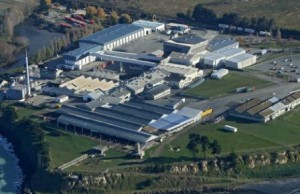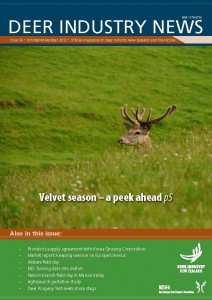 Representatives of a Belgian company which has imported New Zealand frozen and chilled lamb for almost 40 years have made a flying visit to New Zealand.
Representatives of a Belgian company which has imported New Zealand frozen and chilled lamb for almost 40 years have made a flying visit to New Zealand.
Leading meat exporter and processor Alliance Group hosted a delegation from Van Aerde NV and its subsidiary Bimpex Meat NV.
The companies visited Alliance Group’s new venison processing plant at Smithfield near Timaru, a venison farm in Geraldine and the co-operative’s Lorneville plant near Invercargill.
Eddy Lannoo, managing director of Bimpex Meat NV, Jan Van Aerde, director of Van Aerde NV and Karin Severijnen, technical specialist at Van Aerde NV, also discussed the upcoming lamb and venison programme. Bimpex NV specialises in the importation of chilled meat and venison.
Murray Brown, general manager marketing, Alliance Group, said both Bimpex Meat NV and Van Aerde NV were important customers of Alliance Group.
“Bimpex imports between 3,500-4,000 metric tonnes of lamb and venison from New Zealand every year so we obviously value our relationship with them. The company also has strong historic ties with New Zealand, having been established in the 1960s and importing New Zealand frozen lamb to Belgium since the mid 1970s. They have also been importing frozen and chilled venison for 15 years.
“It was also the companies’ first opportunity to visit our new $8.6 million venison plant at Smithfield. The delegation were impressed with the investment in Smithfield, exceptional product quality and food safety standards.”
Until the upgrade, Smithfield only processed sheep and lamb and, with the recent investment, has created more than 50 jobs based at the plant.








